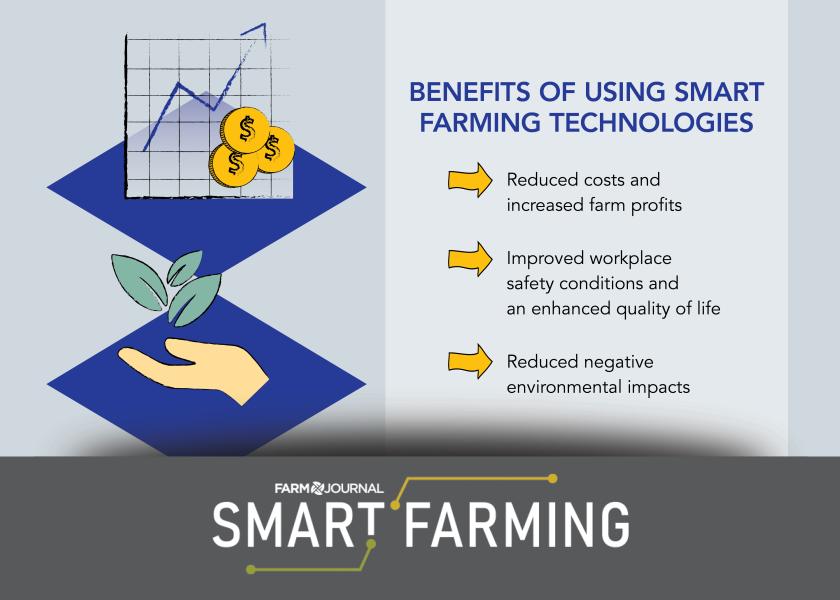Technical Debt: Self Scout to Avoid Tech Pitfalls

Farm Journal’s Smart Farming Week is an annual week-long emphasis on innovation in agriculture. The goal is to encourage you to explore and prioritize the technology, tools and practices that will help you farm smarter. Innovation today ensures an efficient, productive and sustainable tomorrow.
Just as any top NFL Draft prospect must run the 40-yard dash within a similar range to the other top prospects at their respective position from previous draft classes, there are boxes any ag tech new release should check off to ultimately prove useful and profitable.
“At the end of the day, you want your technology to make you money, save you money, or create new opportunities for you,’ Cubbage says. “Or, some technology may even save the day as far as having battery or generator backup, or even redundant internet (options). You want it to do something for you and you want it to return something to the bottom line.”
With that in mind, farmers should annually complete an accurate “self-scout,” (former New England Patriots head coach Bill Belicheck is noted as one of the NFL’s all-time great self-scouters) or unbiased self-evaluation, of their tech stack.
Taking a hard look at what your technology is doing for your farm – and what you absolutely need it to do going forward – can save you from spending capital on technology or machines that don’t return benefits to your bottom line.
That was one basic premise of The Scoop columnist and ag tech industry expert Steve Cubbage’s Top Producer Summit presentation, “What’s Your Farm’s Technical Debt?”.
Cubbage had a few salient points in how farmers should look at new technology before adopting.
- Efficiency Matters: Automation is where production agriculture has historically seen the greatest leaps in productivity (think Eli Whitney’s cotton gin). Or a modern-day example would be the advent of auto-steer. Machine guidance is the fastest and easiest ROI a farmer can find.
- Robotics and AI: Advances made across these two technology segments will “likely lead to leapfrog gains in productivity,” according to Cubbage.
- Opportunities May Require New Tech: Carbon credit markets are just one example that fits here. There may be systems or implements you must upgrade to collect the right type of data to participate (ie get paid). Even though it costs money up front, these are the type of investments that can have a big impact when farm revenues go flat or into the red.
“Production ag is a costly business. You write six, sometimes seven figure checks for putting a crop in each year,” Cubbage said. “Reducing waste is important, but so is looking at technology that can increase your ROI and shrink costs at the same time. Anytime you find something like that, that’s a pretty good day and probably a pretty good investment.”







